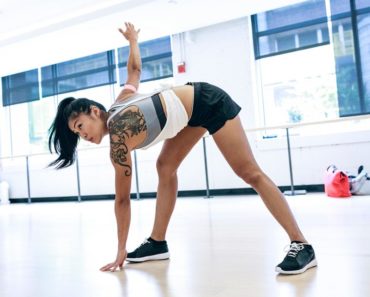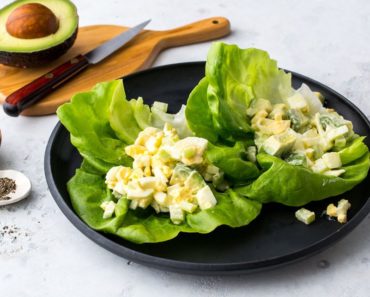 What you eat determines how full you feel.
What you eat determines how full you feel.
This is because foods affect fullness differently.
For example, you need fewer calories to feel full from boiled potatoes or oatmeal than from ice cream or a croissant (1).
Foods that are filling can ward off hunger and help you eat less at the next meal (2).
For this reason, these types of foods should help you lose weight in the long run.
This article lists 15 incredibly filling foods.
But first, let’s look at the reasons why some foods are more filling than others.
What Makes a Food Filling?
Satiety is a term used to explain the feeling of fullness and loss of appetite that happens after eating.
A scale called the satiety index measures this effect. It was developed in 1995, in a study that tested 240-calorie servings of 38 different foods (1).
The foods were ranked according to their ability to satisfy hunger. Foods that scored higher than 100 were considered more filling, while foods that scored under 100 were considered less filling.
What this means is that eating foods that score higher on the satiety index can help you eat fewer calories overall.
Filling foods tend to have the following characteristics:
- High in protein: Studies show that protein is the most filling macronutrient. It changes the levels of several satiety hormones, including ghrelin and GLP-1 (3, 4, 5, 8, 11).
- High in fiber: Fiber provides bulk and helps you feel full for longer. Fiber may slow down the emptying of the stomach and increase digestion time (3, 6, 7).
- High in volume: Some foods contain a lot of water or air. This may help with satiety as well (9,12).
- Low in energy density: This means that a food is low in calories for its weight. Foods with a low energy density are very filling. They typically contain a lot of water and fiber, but are low in fat (3, 6, 9, 10).
Whole, unprocessed foods are also generally more filling than processed foods.
Bottom Line: Filling foods tend to have certain characteristics, such as being high in protein or fiber. These types of foods tend to score high on a scale called the satiety index.
1. Boiled Potatoes
Potatoes have been demonized in the past, but are actually very healthy and nutritious.
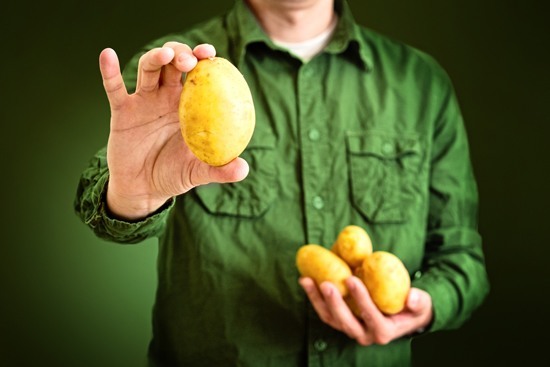
Cooked, unpeeled potatoes are a good source of several vitamins and minerals, including vitamin C and potassium (13, 14).
Potatoes are high in water and carbs, and contain moderate amounts of fiber and protein. They also contain almost no fat (15).
Compared to other high-carb foods, potatoes are very filling.
In fact, boiled potatoes scored a 323 on the satiety index, which is the highest number of all 38 foods tested. They scored nearly 7 times higher than croissants, which scored the lowest (1).
One study found that eating boiled potatoes with pork steak led to lower calorie intake during the meal, compared to eating the steak with white rice or pasta (16).
Some evidence indicates that part of the reason why potatoes are so filling is because they contain a protein called proteinase inhibitor 2 (PI2). This protein may suppress appetite (17, 18).
Bottom Line: Boiled potatoes are very filling, and scored the highest of all the foods on the satiety index. They can fill you up and help you eat fewer calories in total.
2. Eggs
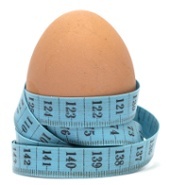
Eggs are incredibly healthy and nutrient-dense.
Most of the nutrients are found in the yolks, including the antioxidants lutein and zeaxanthine, which may benefit eye health (19).
Eggs are a great source of high-quality protein. A large egg contains around 6 grams of protein, including all 9 essential amino acids (15).
Eggs are also very filling and score high on the satiety index (1).
One study found that eating eggs for breakfast, rather than a bagel, increased fullness and led to less calorie intake over the next 36 hours (20).
Another study found that a protein-rich breakfast of eggs and lean beef increased fullness and helped people make better food choices (21).
Bottom Line: Eggs are a nutritious, high-protein food with a powerful impact on fullness. They may help you eat less for up to 36 hours after a meal.
3. Oatmeal
Oats, eaten as oatmeal (porridge), are a popular breakfast choice.
Oatmeal is fairly low in calories and a great source of fiber, particularly a soluble fiber called beta-glucan. It also scores high on the satiety index, ranking 3rd overall (1).
One recent study found that participants felt more full and less hungry after eating oatmeal, compared to ready-to-eat breakfast cereal. They also ate fewer calories during lunch (22).
Oatmeal’s filling power comes from its high fiber content and its ability to soak up water.
Soluble fiber, such as the beta-glucan in oats, can help you feel full. It may also help release satiety hormones and delay the emptying of the stomach (23, 24, 25).
Bottom Line: Oatmeal is a very filling breakfast choice. It may help you eat fewer calories in the following meal and delay emptying of the stomach.
4. Fish

Fish is loaded with high-quality protein.
Fish is also rich in omega-3 fatty acids, which are essential fats that we must get from food.
According to one study, omega-3 fatty acids may increase the feeling of fullness in people who are overweight or obese (26).
Additionally, some studies indicate that the protein in fish may have a stronger effect on fullness than other sources of protein.
On the satiety index, fish scores higher than all other protein-rich foods, including eggs and beef. Fish actually had the second highest score of all the foods tested (1).
Another study compared fish, chicken and beef protein. The researchers found that fish protein had the strongest effect on satiety (27).
Bottom Line: Fish is rich in protein and omega-3 fatty acids, which may increase the feeling of fullness. The protein in fish may have a stronger effect on fullness than other types of protein.
5. Soups
Liquids have often been considered to be less filling than solid foods, although the evidence is mixed (28, 29).
However, soups are a bit different. Research shows that soups may actually be more filling than solid meals containing the same ingredients (30, 31).
In one study, volunteers consumed a solid meal, a chunky soup or a smooth soup that had been put through a food processor.
The feeling of fullness and the rate at which the food left the stomach were then measured. The smooth soup had the greatest impact on fullness and the slowest rate of stomach emptying, followed by the chunky soup (31).
Bottom Line: Soups are very filling meals, despite being in liquid form. They may also stay in the stomach longer, thus prolonging the feeling of fullness.
6. Meat
High-protein foods, such as lean meats, are very filling (32, 33).
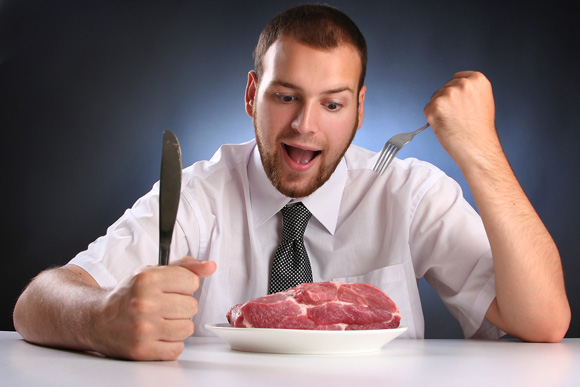
For example, beef can have a powerful effect on satiety. It scores 176 on the satiety index, which is the second highest of the protein-rich foods, right after fish (1, 34)
One study found that people who ate high-protein meat at lunch ate 12% less at dinner, compared to those who had a high-carb meal for lunch (35).
Bottom Line: Meat is high in protein and very filling. Beef scored the second highest of the protein-rich foods on the satiety index.
7. Greek Yogurt
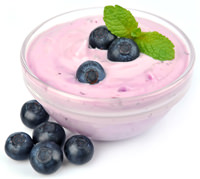
Greek yogurt is very thick compared to regular yogurt, and is typically higher in protein.
Greek yogurt is a great breakfast option. It is also a popular afternoon snack that may help fill you up until the next meal.
In one study, women consumed a 160-calorie yogurt snack that was either low, moderate or high in protein.
Those who ate the high-protein Greek yogurt felt full the longest, were less hungry and ate dinner later (36).
Bottom Line: Greek yogurt is a popular, high-protein breakfast and snack. It may increase the feeling of fullness and help you feel less hungry until the next meal.
8. Vegetables
Vegetables are incredibly nutritious. They’re loaded with all sorts of vitamins, minerals and beneficial plant compounds.

Vegetables are also high-volume, low-calorie foods. They contain fiber and water, which adds bulk to your meals and helps fill you up.
Moreover, vegetables take some time to chew and are very satisfying in that way.
One study found that eating a large portion of salad before a meal of pasta increased the feeling of fullness and reduced overall calorie intake (37).
Bottom Line: Vegetables are rich in fiber and water, which may keep you full for longer. Eating a salad before a meal may help you eat fewer calories overall.
9. Cottage Cheese
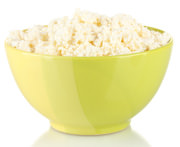
Cottage cheese is usually low in fat and carbs, yet high in protein.
Its high protein content can help you feel full, even while consuming relatively few calories.
One study found that the filling effect of cottage cheese was similar to the filling effect of eggs (38).
Bottom Line: Cottage cheese is high in protein, yet low in fat and calories. Its effect on fullness may be comparable to that of eggs.
10. Legumes
Legumes, such as beans, peas, lentils and peanuts, have an impressive nutritional profile.
They are loaded with fiber and plant-based protein, yet have a relatively low energy density. This makes them very filling (39).
One article reviewed 9 randomized trials that studied post-meal fullness from pulses, which are a part of the legume family (40).
They found that participants felt 31% more full from eating pulses, compared to meals of pasta and bread.
Bottom Line: Legumes are a good source of fiber and protein. They may help you feel full compared to other foods.
11. Fruit

Fruit has a low energy density. It contains lots of fiber, which may slow down digestion and help you feel full for longer.
Apples and oranges score very high on the satiety index, at around 200 (1).
However, it is important to note that it is always better to eat whole fruit instead of fruit juice, which is not particularly filling (41).
Bottom Line: Fruit is high in fiber and provides bulk that may help you feel full for longer. Whole fruit has a stronger effect on fullness than fruit juice.
12. Quinoa
Quinoa is a popular seed/grain that is a good source of protein.
In fact, it provides all the essential amino acids and is therefore seen as a complete protein source (42, 43).
Quinoa is also higher in fiber than most grains.
The protein and fiber content of quinoa may increase the feeling of fullness and help you eat fewer calories overall (4, 6).
Bottom Line: Quinoa is a good source of both protein and fiber, which may help increase the feeling of fullness.
13. Nuts
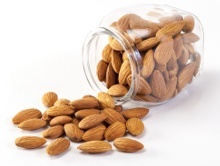
Nuts, such as almonds and walnuts, are energy-dense, nutrient-rich snack options.
They are high in healthy fats and protein, and studies show that they are very filling (44, 45, 46).
Another study highlighted the importance of chewing your nuts properly.
It found that chewing almonds 40 times led to a greater reduction in hunger and an increased feeling of fullness, compared to chewing 10 or 25 times (47).
Bottom Line: Nuts are a popular snack choice. They are rich in healthy fats and also contain some protein. They are very filling and may reduce hunger.
14. Coconut Oil
Coconut oil contains a unique combination of fatty acids, which are about 90% saturated.
It consists almost entirely of medium-chain triglycerides. These fatty acids enter the liver from the digestive tract, where they may be turned into ketone bodies.
According to some studies, ketone bodies can have an appetite-reducing effect (48).
One study reported that people who ate breakfasts supplemented with medium-chain triglycerides ate significantly fewer calories at lunch (49).
Another study looked at the effects of medium- and long-chain triglycerides. It found that those who ate the most medium-chain triglycerides consumed, on average, 256 fewer calories per day (50).
Bottom Line: Coconut oil is loaded with medium-chain triglycerides, which can significantly reduce appetite and calorie intake.
15. Popcorn
Popcorn is a whole grain food that is very high in fiber. One medium-sized bag (112 grams) may contain around 16 grams of fiber (15).
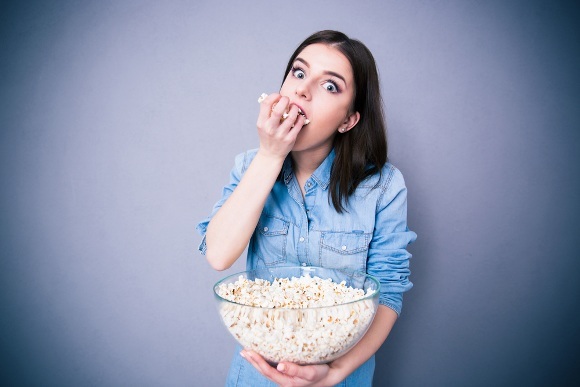
Studies have found that popcorn is more filling than other popular snacks, like potato chips or chocolate (51, 52).
Several factors may contribute to its filling effects, including the high fiber content and low energy density (53, 6).
However, note that the popcorn you prepare yourself in a pot or air-popper machine are the healthiest options. Adding a lot of fat to the popcorn can increase the calorie content significantly.
Bottom Line: Popcorn is a popular snack that is high in fiber, high in volume and low in energy density. Calorie for calorie, it is very filling.
Take Home Message
Filling foods possess certain qualities.
They tend to be high in fiber or protein, and have a low energy density.
Additionally, these foods tend to be whole, single-ingredient foods – not processed junk foods.
Focusing on whole foods that fill you up with fewer calories may help you lose weight in the long run.
What other foods fill you up? Feel free to tell us in the comments!
The post 15 Foods That Are Incredibly Filling appeared first on http://authoritynutrition.com/
(via Authority Nutrition)



